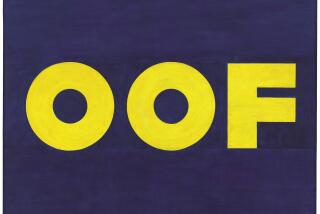Magic of Magritte: a paradox in the works
BASEL, Switzerland — Visitors who remember the “Keystone Kops” are sure to be baffled when they see the Rene Magritte painting for the first time: The image of a woman’s nightgown hanging alone in a wardrobe is titled “In Memory of Mack Sennett,” the father of slapstick comedy in motion pictures.
But Magritte, one of the world’s most popular Surrealists, deliberately sought such paradox in his works. “The titles of paintings are not explanations and the paintings are not illustrations of their titles,” he once said. “The relationship between the title and the paintings is poetic.”
The “Memory” image is among the lesser known in the samples of Magritte’s painted poetry shown in a major retrospective at the Beyeler Foundation Museum in suburban Riehen, Switzerland.
Named “The Key to Dreams,” the show combines more than 90 works by the prolific painter, on loan from museums and private collections in the United States and Europe. An accompanying catalog refers to a “wonderful exhibition of extraordinarily magical pictures.” The show runs through Nov. 27.
On view are images from all phases of Magritte’s career. The earliest is a collage, “The Lost Jockey,” dated 1926 and considered to be Magritte’s first key surreal work. “Carte Blanche,” produced in 1965, two years before his death, is rated as a last masterpiece. Confusing the viewer’s eye, it depicts a woman on horseback obscuring trees or being obscured by them. Also included is a self-portrait, done in 1951, that shows a four-armed Magritte, appropriately titled “The Magician.”
Drawing the most attention, of course, are what have become Magritte’s trademarks: the picture of the tobacco pipe “that isn’t a pipe” and the men in bowler hats.
The painter’s rise from anonymity was slow. His first one-man show in 1927 drew only rough reviews. To make a living, he designed wallpaper and advertisements, but at the same time he produced various works that later earned renown.
They include the first bowler hat men as well as the famous painting of the pipe, on loan from the Los Angeles County Museum of Art. The lettering underneath reads, “Ceci n’est pas une pipe” (“This is not a pipe”) -- because the picture cannot be stuffed with tobacco, as Magritte once explained in an interview.
When Magritte’s Belgian gallery went bankrupt, E.L.T. Mesens, a close friend and a prominent figure in the Belgian art scene, went into debt in 1932 to buy the gallery’s stock of 150 Magritte works for 5,000 Belgian francs, roughly equivalent today to $10,000. Mesens, who moved to London in 1938, helped promote Magritte.
But international fame came only when Magritte was signed up by a New York dealer, Alexander Iolas, who remained his agent until his death. Beginning in 1947, Iolas organized several one-man Magritte shows that proved successful. He advised Magritte which of his paintings were best liked and encouraged him to do variations of the same motifs. Magritte often complied.
Still, Magritte did not sell well in those years. At a 1961 New York auction, an early painting, “The Celestial Shade,” fetched just $1,250. But the market has changed. In 1996, one early version of “The Dominion of Light” was bought in London for about $3.9 million.
More to Read
The biggest entertainment stories
Get our big stories about Hollywood, film, television, music, arts, culture and more right in your inbox as soon as they publish.
You may occasionally receive promotional content from the Los Angeles Times.










